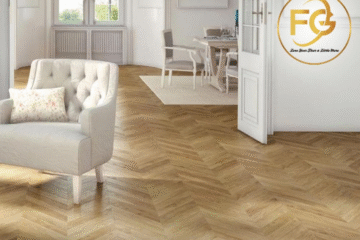When it comes to cleaning, most people believe a quick wipe-down and a spritz of disinfectant are enough to keep their spaces fresh and healthy. But ask any expert cleaner, and you’ll quickly discover that professional cleaning is as much about technique, science, and attention to detail as it is about elbow grease. In this article, I’ll share insights that only seasoned cleaning professionals truly appreciate—insights that can transform your approach and results, whether you’re tidying up a home, office, or commercial space.
Beyond the Obvious: Cleaning Is About Prevention, Not Just Reaction
Most people clean when they see dirt. Expert cleaners, however, know that the best cleaning is proactive. Instead of waiting for grime to accumulate, professionals establish a routine that prevents buildup in the first place. This not only keeps spaces looking pristine but also extends the lifespan of surfaces and furnishings.
Key professional tip:
Implement a maintenance schedule tailored to each area’s usage, as suggested by itsGLO Cleaning, a professional cleaning company in Toronto. High-traffic zones need more frequent attention, while less-used spaces can be cleaned less often but with equal thoroughness.
The Power of Process: Why Sequence Matters
A common mistake among non-professionals is cleaning in a haphazard order. Experts always clean from top to bottom and from cleanest to dirtiest areas. Why? Gravity ensures that dust and debris fall downward, so starting at the top (like ceiling fans or shelves) prevents re-contaminating already-cleaned surfaces below.
Professional sequence:
- Dust ceiling fans, light fixtures, and vents first.
- Wipe down walls, windows, and sills.
- Clean furniture and surfaces.
- Finish with floors—vacuum, sweep, and mop last.
The Science of Cleaning Products: Not All Solutions Are Equal
An expert cleaner doesn’t just grab any old spray bottle. They understand the chemistry behind cleaning products and choose the right solution for the job. For example, acidic cleaners (like vinegar) are great for dissolving mineral deposits but can damage natural stone. Alkaline cleaners are better for cutting grease but may dull some finishes.
What pros do:
- Read product labels carefully and follow dilution instructions.
- Test new products on inconspicuous areas.
- Use color-coded cloths and tools to prevent cross-contamination (e.g., red for bathrooms, blue for glass, green for kitchens).
Hidden Hotspots: The Most Overlooked Areas
Even the tidiest homes and offices have “hotspots” that accumulate germs and grime. Expert cleaners know these areas are often missed in routine cleaning, yet they can harbor bacteria and allergens.
Commonly overlooked spots:
- Door handles and light switches
- Remote controls and keyboards
- Under furniture and behind appliances
- Faucet handles and toilet flush levers
- Baseboards and air vents
Professionals make a checklist to ensure these areas are never forgotten.
The Microfiber Advantage
Ask any pro: microfiber cloths are a game-changer. Unlike cotton rags or paper towels, microfiber traps dust, dirt, and bacteria rather than just pushing them around. They’re also reusable and reduce the need for harsh chemicals.
Pro tip:
Maurice from itsGLO Cleaning, suggests using a damp microfiber for dusting and a dry one for polishing. Wash them separately from other laundry to maintain their effectiveness, he says.
Time Management: Efficiency Without Sacrificing Quality
Expert cleaners work methodically, using a system that maximizes efficiency without cutting corners. They group tasks by type (dusting, then wiping, then vacuuming) and use the right tools for each job. This not only saves time but ensures consistent, high-quality results.
How to clean like a pro:
- Gather all supplies before starting.
- Use caddies or aprons to keep tools handy.
- Set a timer for each room to stay on track.
Health and Safety: Protecting Yourself and Others
Professionals never compromise on safety. They wear gloves, use masks when necessary, and ensure proper ventilation, especially when using strong chemicals. They’re also trained to recognize and safely handle mold, biohazards, and allergens.
The Final Touch: Inspection and Detailing
What sets expert cleaners apart is their attention to detail. After cleaning, they inspect their work, touch up missed spots, and add finishing touches—like fluffing pillows or folding towels neatly, that make a space feel truly cared for.
Conclusion
Cleaning like an expert isn’t about working harder—it’s about working smarter. By adopting the habits, techniques, and mindset of professionals, anyone can achieve a deeper, longer-lasting clean. The difference is in the details, the process, and the commitment to excellence that only true experts bring to the table. Whether you’re maintaining your home or preparing a space for guests, these insider tips will help you clean not just for appearance, but for health, comfort, and peace of mind.



